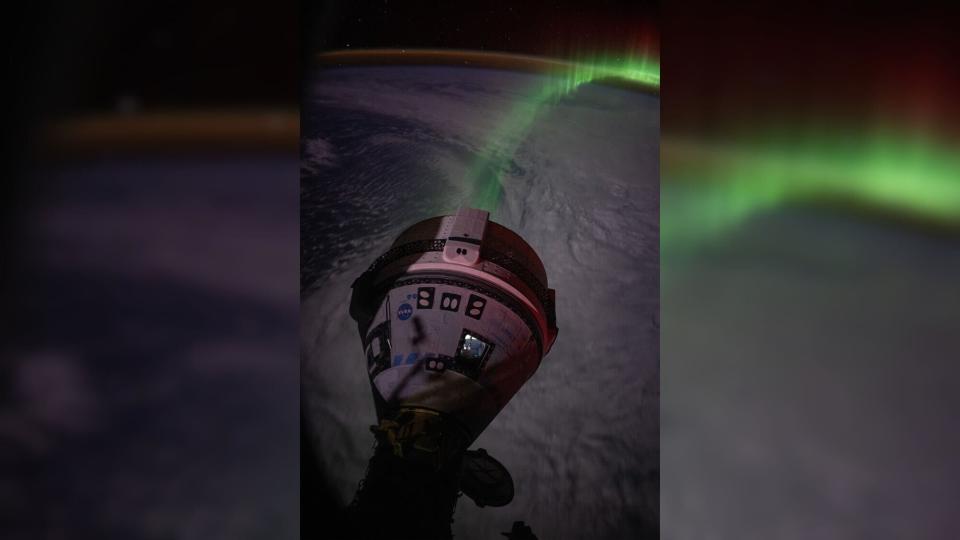When you buy through links in our articles, Future and its syndication partners may earn commission.

Boeing’s two Starliner astronauts could learn their fate within the next two weeks — but for now NASA doesn’t know when the duo will return home. So for now, the spacecraft’s crew, NASA astronauts Butch Wilmore and Sunita Williams, will remain on the International Space Station (ISS) while the space agency’s best and brightest continue to evaluate data from ground tests of the Starliner systems alongside Boeing engineers.
Wilmore and Williams launched to the ISS aboard Starliner for the spacecraft’s Crew Flight Test (CFT) on June 5. Their mission to complete the first crewed test flight of Boeing’s commercial crew vehicle was initially planned to last only 10 days, but could now be extended to eight months, with a possible return date of 2025.
Despite initially being delayed by a small helium leak, Starliner’s journey to orbit went smoothly. However, as the spacecraft approached the ISS during docking, it experienced failures in five of its 28 thrusters. As a result, NASA and Boeing have extended the Starliner astronauts’ stay at the space station indefinitely while teams on the ground work to better understand what went wrong. Now, NASA officials say they expect to make a final decision on the crew’s return in the last week of August.
NASA had previously said in an update that it would invite additional propulsion experts to further assess Starliner’s issues; officials confirmed that information on a call with reporters on Wednesday afternoon (Aug. 14).
“We brought in people from the robotic spaceflight community at Glenn [Research Center] and at the Goddard Space Flight Center at JPL. They are accustomed to analyzing propulsion systems when spacecraft are millions of miles away, and they provided us with some useful input,” Ken Bowersox, associate administrator for the NASA Space Operations Mission Directorate, said during the briefing.
“It’s important to have experts with a completely different perspective come in and look at the data that we’re putting together, trying to understand what it is that we can’t understand,” Emily Nelson, chief flight director for NASA’s Flight Operations Directorate, said during the briefing.


While these experts continue to examine Starliner’s thruster data, NASA has also outlined some contingency plans. In the event of an emergency on the ISS, Wilmore and Williams currently have the authority to use Starliner to evacuate the space station — but beyond that, NASA isn’t comfortable giving the spacecraft permission to return to Earth.
Starliner’s delayed launch from the space station has forced NASA to postpone other upcoming flights to the orbital laboratory. SpaceX’s Crew-9 launch, originally scheduled for this month, is now scheduled for late September, and an upcoming SpaceX Cargo Dragon resupply flight for NASA has been postponed until mid-October. To avoid traffic congestion for incoming spacecraft, Starliner must depart the station ahead of Crew-9’s arrival — whether carrying crews or not.
In the “or not” case, NASA is prepared to launch the Crew-9 mission with just two astronauts (or cosmonauts), eventually adding Wilmore and Williams as official crew members to Expeditions 71 and 72. In that case, the Starliner would depart the space station with its cabin empty, perform a deorbit burn and reentry without Wilmore and Williams, and hopefully perform a nominal parachute deployment, landing, and recovery. The two astronauts would receive new seat assignments on the Crew-9 Dragon and return to Earth at the end of the mission’s rotation, around February 2025.
RELATED STORIES:
— Thrusters and helium leaks can’t stop Boeing’s Starliner astronaut test flight — so why are they happening?
— Starliner: Boeing’s next-generation spaceship for astronauts
— SpaceX’s Crew-9 astronaut launch postponed until September 24 due to Boeing Starliner issues
“Deciding whether or not we’re going to take crews back to Starliner is a pretty big discussion,” Bowersox said on Wednesday’s call. “The big thing we’re looking at is the propulsion system.”
“Our biggest concern is to perform a successful deorbit burn and [propellant] “The system is performing exactly as it needs to, right up until the end of the deorbit burn,” Bowersox added.
NASA plans to conduct a flight readiness review after some key data analysis is complete, which could begin next week. In the meantime, Starliner astronauts are patiently awaiting a final decision.
Wilmore and Williams have been on the International Space Station (ISS) for several weeks longer than they anticipated, doing their best to help with the station’s regular duties, according to NASA chief astronaut Joe Acaba. They also seem to be enjoying the extra time they’re spending in orbit.
“Right now, the agency has taken the time to make sure we’re not putting the crew at undue risk,” Merak said at a briefing Wednesday. “As astronauts, that’s always something worth looking forward to.”